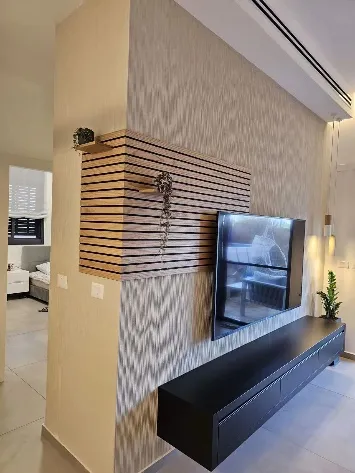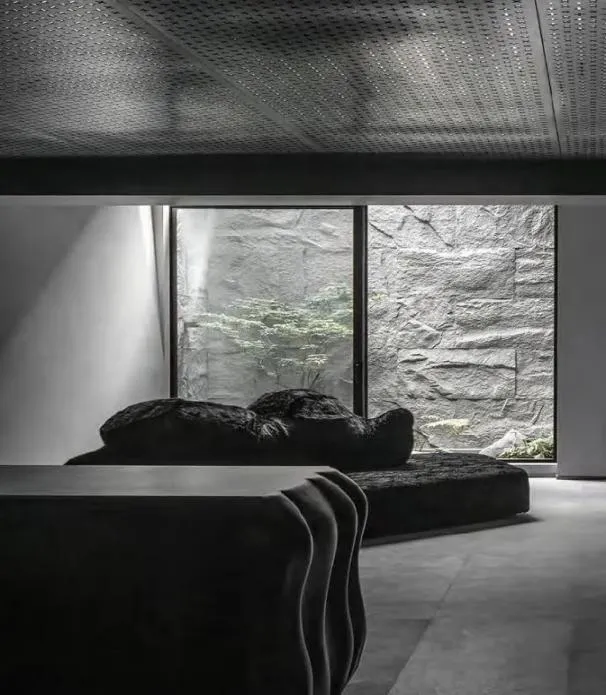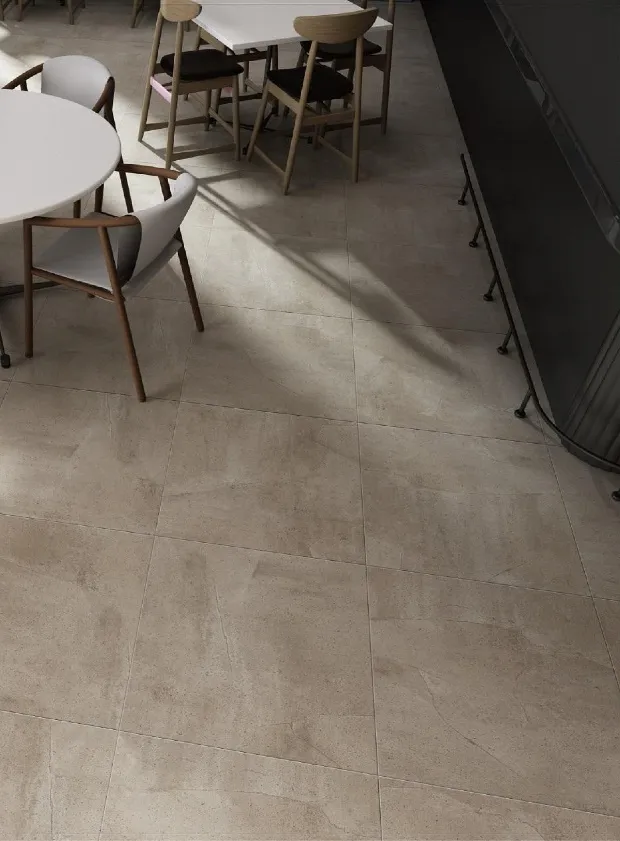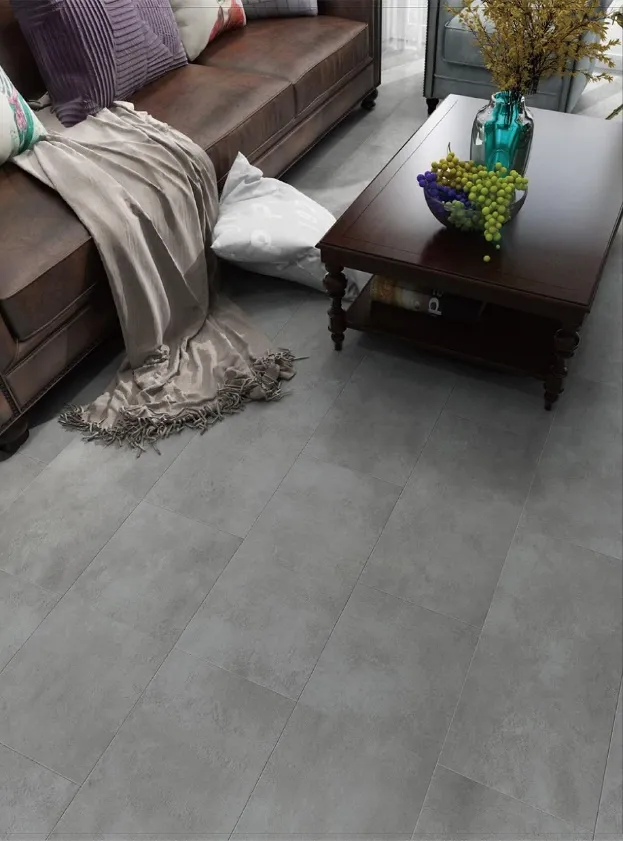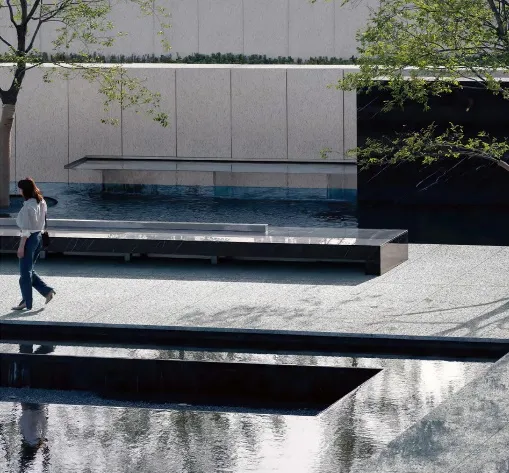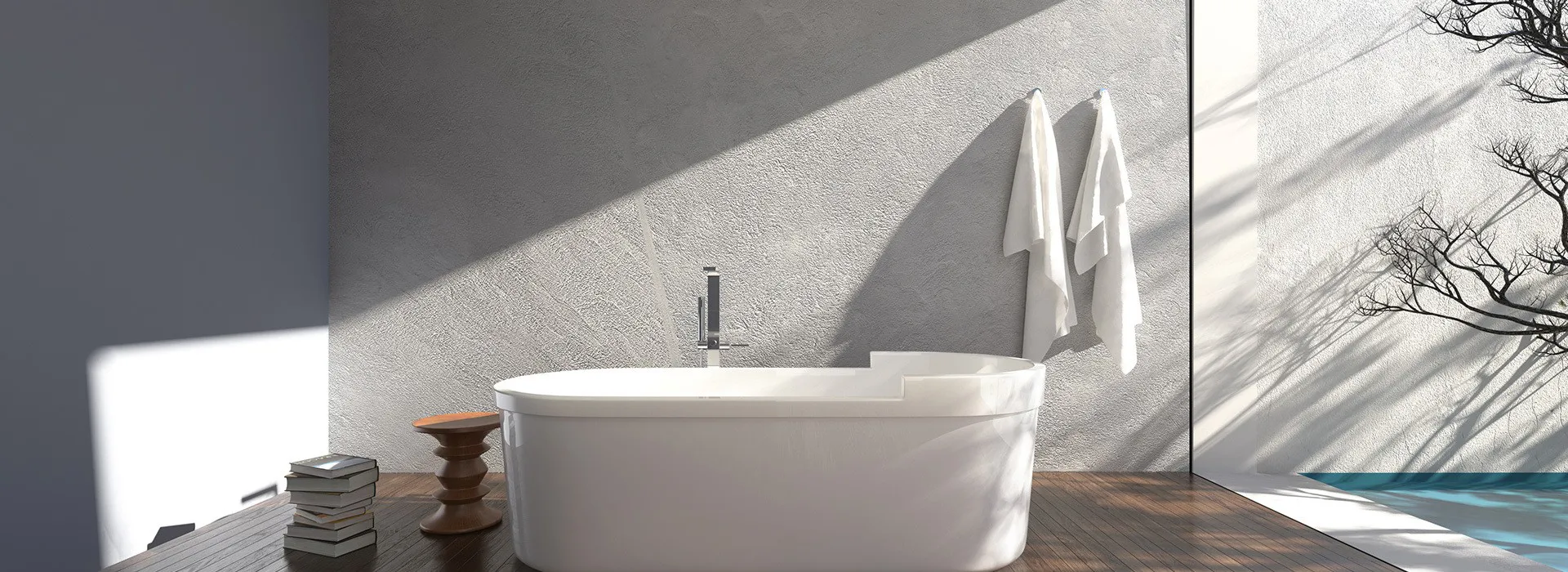
Wood-Plastic Composite (WPC) Wall Panels: Key Advantages for Modern Construction
Introduction: The Evolution of Wall Panels in Modern Building Design
In the dynamic world of construction, where every decision balances aesthetics, functionality, and sustainability, the choice of wall materials has never been more critical. Today's architects, designers, and homeowners are no longer satisfied with one-dimensional solutions—they seek materials that can withstand the test of time, reduce environmental impact, and elevate the visual appeal of spaces, all while keeping costs in check. Enter Wood-Plastic Composite (WPC) wall panels: a innovative solution that has quickly become a staple in both residential and commercial projects. Blending the best of natural wood and durable plastic, WPC wall panels offer a versatile alternative to traditional materials like solid wood, vinyl, or stone. As the demand for smarter, more resilient building materials grows, understanding the unique benefits of WPC wall panels—and why they're increasingly favored by industry professionals—has become essential for anyone involved in modern construction.
This article explores the world of WPC wall panels, from their composition and manufacturing process to their standout advantages in today's building landscape. We'll dive into how these panels address common pain points in construction, such as moisture damage, high maintenance costs, and limited design flexibility, and why partnering with a reliable wpc wall panel supplier can unlock even more value through tailored wpc wall panel solutions . Whether you're renovating a home, designing a retail space, or managing a large-scale commercial project, read on to discover why WPC wall panels are reshaping the future of interior and exterior design.
What Are WPC Wall Panels?
At their core, WPC wall panels are composite materials made by blending wood fibers (or wood flour) with thermoplastic resins—typically polyethylene (PE), polypropylene (PP), or polyvinyl chloride (PVC)—along with additives like UV stabilizers, colorants, and coupling agents. This combination results in a material that retains the warm, organic look and feel of wood while gaining the strength, durability, and moisture resistance of plastic. The manufacturing process involves melting the plastic, mixing it with wood fibers, and extruding the mixture into panels of various sizes, textures, and profiles. Some panels also include a foaming agent to reduce weight without sacrificing structural integrity, making them easier to handle and install.
Unlike solid wood, which is prone to warping, splitting, or rotting when exposed to moisture, WPC panels are engineered to resist these issues. Unlike pure plastic panels, they avoid the artificial, overly sleek appearance that can feel cold or industrial. Instead, WPC strikes a balance: it mimics the grain patterns, knots, and textures of natural wood (or even stone, concrete, or metal, depending on the design) while offering superior performance in harsh environments. This versatility has made WPC a go-to choice for both interior and exterior applications, from accent walls in living rooms to cladding on commercial facades.
Today's wpc wall panel supplier offerings go beyond basic designs, too. Advanced manufacturing techniques allow for custom colors, embossed patterns, and even 3D textures, giving designers unprecedented creative freedom. Whether you're aiming for a rustic cabin vibe, a modern minimalist look, or a high-end hotel aesthetic, there's a WPC panel to match—and with the right wpc wall panel solutions , these panels can be adapted to fit unique spaces, curves, or architectural features that would challenge traditional materials.
Key Advantages of WPC Wall Panels for Modern Construction
WPC wall panels have risen in popularity not by accident—they solve many of the most persistent problems faced by builders, designers, and property owners. Let's break down their most compelling advantages:
1. Unmatched Durability: Resistant to Moisture, Rot, and Pests
One of the biggest drawbacks of natural wood wall panels is their vulnerability to the elements. In humid climates or high-moisture areas like bathrooms, kitchens, or basements, wood can absorb water, leading to swelling, rot, or mold growth. Insects like termites or carpenter ants can also wreak havoc, requiring costly repairs. WPC wall panels eliminate these risks entirely. The plastic component in WPC creates a barrier that repels moisture, preventing water absorption and the issues that follow. This makes them ideal for use in wet environments—think shower walls, laundry rooms, or even exterior cladding in rainy regions. Additionally, since WPC contains no organic matter that pests can feed on, termites, ants, and rodents leave it untouched. Unlike wood, which may need chemical treatments to resist pests, WPC panels are inherently pest-proof, making them a safer, low-maintenance option for long-term use.
This durability also extends to everyday wear and tear. WPC panels are scratch-resistant, fade-resistant (thanks to UV stabilizers in the mix), and less prone to dents than solid wood or even some vinyl panels. In high-traffic commercial spaces like retail stores or office lobbies, where walls take constant abuse from furniture, foot traffic, or equipment, WPC panels maintain their appearance for years, reducing the need for frequent replacements.
2. Sustainability: Eco-Friendly by Design
In an era where sustainability is no longer a trend but a requirement, WPC wall panels shine as an environmentally responsible choice. Many WPC panels are made using recycled materials: up to 70% of their composition can consist of reclaimed wood fibers (from sawdust, wood chips, or manufacturing waste) and recycled plastic (from bottles, packaging, or other post-consumer waste). By diverting these materials from landfills, WPC production helps reduce reliance on virgin resources and lowers the carbon footprint of construction projects. Additionally, since WPC panels are long-lasting and require little to no chemical treatments (unlike pressure-treated wood, which often contains harmful preservatives), they minimize environmental impact over their lifecycle.
Another eco-friendly benefit is their low maintenance requirements. Traditional wood panels often need regular painting, staining, or sealing to protect against the elements—processes that involve volatile organic compounds (VOCs) and generate waste. WPC panels, by contrast, can be cleaned with simple soap and water, eliminating the need for harsh chemicals. Their resistance to fading also means they won't require repainting or refinishing, further reducing their environmental footprint. For builders and homeowners aiming to achieve green certifications like LEED or BREEAM, choosing WPC wall panels (and working with a wpc wall panel supplier that prioritizes sustainability) can contribute to meeting key criteria for material efficiency and indoor air quality.
3. Design Flexibility: Endless Aesthetics for Every Space
Gone are the days when "practical" materials meant sacrificing style. WPC wall panels offer a level of design versatility that's hard to match with traditional options. Thanks to advanced extrusion and embossing techniques, manufacturers can replicate virtually any texture or pattern, from the rich grain of oak or walnut to the smooth finish of concrete, the rugged look of stone, or even custom abstract designs. This means WPC panels can adapt to any design theme: a cozy, cabin-like bedroom with wood-look panels, a sleek, modern office with minimalist gray tones, or a vibrant retail space with bold, textured accents.
Color options are equally diverse. WPC panels come in a spectrum of hues, from natural wood tones (light maple, dark mahogany) to bold statement colors (navy blue, forest green, charcoal gray), and even metallic finishes for a touch of luxury. Some suppliers also offer custom color matching, allowing designers to align panels with brand palettes or existing decor. For projects that demand unique shapes or curves, flexible WPC panels are available, making them suitable for accent walls, archways, or curved architectural features. Unlike rigid stone or brick, which require specialized cutting tools and skilled labor, WPC panels can be easily trimmed, routed, or shaped on-site to fit any space, giving designers the freedom to bring their visions to life without compromise.
This flexibility is further enhanced by the range of panel sizes and profiles. From narrow, vertical slats to wide, horizontal planks, or even 3D decorative panels that add depth to walls, the options are nearly limitless. A reputable wpc wall panel supplier will often provide samples and design support, helping clients visualize how different textures, colors, and layouts will look in their space—turning abstract ideas into tangible, stunning results.
4. Ease of Installation: Time and Labor Savings
Construction projects are often constrained by tight timelines and labor costs, making ease of installation a top priority for contractors and DIY enthusiasts alike. WPC wall panels excel here, thanks to their lightweight design and user-friendly installation systems. Unlike heavy stone or concrete panels, which require specialized equipment and multiple workers to handle, WPC panels are light enough to be carried and installed by a single person, reducing the need for extra labor. Many panels also feature interlocking "click-and-lock" systems or tongue-and-groove edges, allowing them to be snapped together quickly without the need for nails, screws, or messy adhesives. This not only speeds up installation but also minimizes errors and ensures a seamless, professional finish.
For exterior applications or uneven walls, WPC panels can be mounted using a furring strip or batten system, creating an air gap behind the panels that improves ventilation and prevents moisture buildup. This versatility makes them suitable for both new construction and renovations, even on walls with minor imperfections. Unlike traditional materials that may require pre-treatment (like priming wood) or curing time (like concrete), WPC panels are ready to install right out of the box. In fact, a typical 100-square-foot wall can be completed in a fraction of the time it would take to install solid wood paneling or tile, saving contractors hours of labor and homeowners days of disruption.
Even for DIYers with limited experience, WPC panels are approachable. Many wpc wall panel suppliers provide detailed installation guides, online tutorials, or even on-site support, making it easy to achieve professional results without hiring a contractor. This accessibility has made WPC panels a favorite for home renovations, where homeowners want to upgrade their spaces without the stress of a lengthy, complicated project.
5. Cost-Effectiveness: Long-Term Value Over Time
While the upfront cost of WPC wall panels may be slightly higher than basic vinyl or plywood, their long-term cost savings make them a smarter investment. Let's break it down: traditional wood panels require regular maintenance—sanding, painting, staining, or sealing every 1–3 years—to prevent rot, fading, or insect damage. These maintenance costs add up over time, not to mention the labor involved (or the inconvenience of living in a construction zone during refinishing). Vinyl panels, while cheaper upfront, can crack in extreme temperatures, fade quickly in sunlight, or become brittle over time, leading to frequent replacements. Stone or natural wood, on the other hand, are expensive to purchase, install, and repair.
WPC wall panels eliminate most of these ongoing costs. With their resistance to moisture, pests, and fading, they require minimal maintenance: a quick wipe with soap and water is usually all that's needed to keep them looking new. Their long lifespan—often 20–30 years with proper care—means fewer replacements, reducing both material and labor costs over the life of a building. Additionally, their energy efficiency can contribute to lower utility bills: some WPC panels have insulating properties that help regulate indoor temperatures, keeping spaces cooler in summer and warmer in winter. When you factor in all these savings, WPC panels often end up being more cost-effective than traditional materials, even with a higher initial price tag.
For commercial projects, the cost benefits are even more pronounced. In retail stores, hotels, or offices, downtime for maintenance can mean lost revenue; WPC panels' durability ensures walls stay attractive and functional without interrupting business operations. Property owners also benefit from higher resale value, as WPC panels are seen as a premium, low-maintenance feature that appeals to buyers and tenants alike. When working with a wpc wall panel supplier that offers bulk pricing or package deals, the upfront cost can be further reduced, making WPC an accessible option for projects of all sizes.
WPC vs. Traditional Materials: A Comparative Look
To better understand why WPC wall panels are gaining traction, let's compare them to three common alternatives: solid wood, vinyl, and natural stone. The table below highlights key factors like durability, maintenance, sustainability, and cost, so you can see how WPC stacks up:
| Factor | WPC Wall Panels | Solid Wood Panels | Vinyl Panels | Natural Stone Panels |
|---|---|---|---|---|
| Durability | High: Resistant to moisture, rot, pests, and fading; scratch and impact-resistant. | Low to Medium: Prone to warping, rot, and insect damage; fades in sunlight. | Medium: Resistant to moisture but can crack in extreme temps; prone to fading. | Very High: Extremely durable but heavy; can chip or crack if struck. |
| Maintenance | Low: Wipe clean with soap and water; no painting, staining, or sealing needed. | High: Requires regular sanding, painting, or staining (every 1–3 years). | Low: Wipe clean; may need replacement if cracked or faded. | Medium: Sealing required every 2–5 years; difficult to repair chips. |
| Sustainability | High: Made with recycled wood and plastic; reduces landfill waste; long lifespan. | Medium: Renewable but requires deforestation; chemical treatments may harm the environment. | Low: Made from non-renewable fossil fuels; not easily recyclable. | Low: Quarrying disrupts ecosystems; heavy transportation carbon footprint. |
| Design Flexibility | High: Wide range of colors, textures, and profiles; can mimic wood, stone, or custom designs. | Medium: Limited to natural wood grains and colors; difficult to shape. | Medium: Some color options but limited textures; artificial appearance. | Low: Fixed to natural stone patterns and colors; hard to customize. |
| Installation | Easy: Lightweight; click-and-lock systems; no special tools needed. | Moderate: Requires nails/screws; pre-drilling to avoid splitting. | Easy: Lightweight but may require adhesives; limited interlocking options. | Hard: Heavy; requires specialized tools, adhesives, and skilled labor. |
| Cost (Lifetime) | Cost-Effective: Higher upfront but low maintenance and long lifespan reduce total cost. | Expensive: Low upfront but high maintenance costs over time. | Low-Medium: Low upfront but short lifespan leads to frequent replacements. | Very Expensive: High upfront cost, installation, and maintenance. |
As the table shows, WPC wall panels offer a balanced mix of durability, sustainability, design flexibility, and cost-effectiveness that traditional materials struggle to match. While solid wood may have a classic appeal, its high maintenance and vulnerability to damage make it impractical for many modern projects. Vinyl is cheap but lacks the and longevity of WPC. Stone is durable but heavy, expensive, and hard to install. For most applications, WPC strikes the perfect balance, making it the clear choice for forward-thinking builders and designers.
Applications: Where WPC Wall Panels Shine
WPC wall panels are incredibly versatile, finding use in a wide range of residential and commercial settings. Here are just a few examples of where they excel:
Residential Spaces
In homes, WPC panels are ideal for virtually any room, from living areas to bathrooms. In living rooms and bedrooms, they add warmth and texture as accent walls, wainscoting, or full wall cladding. Their moisture resistance makes them perfect for kitchens and bathrooms, where traditional wood would quickly deteriorate. Homeowners also love using WPC panels in basements, which are prone to dampness, or as exterior siding for porches, decks, or garden walls. For a cohesive look, WPC panels can even be paired with matching WPC flooring, creating a seamless flow between spaces.
Commercial Projects
Commercial spaces benefit from WPC panels' durability and low maintenance. Retail stores use them to create eye-catching feature walls that withstand heavy foot traffic and frequent cleaning. Restaurants and hotels opt for WPC panels in lobbies, dining areas, or guest rooms, where they add a premium look without the upkeep of natural materials. Offices and coworking spaces use WPC panels to divide areas or create branded accent walls, while healthcare facilities appreciate their hygienic, easy-to-clean surfaces. Even educational institutions, like schools or universities, use WPC panels in classrooms or hallways, where they stand up to scratches and daily wear.
Exterior Cladding
While often used indoors, WPC panels are also suitable for exterior applications (when treated with additional UV stabilizers). They make excellent cladding for home exteriors, sheds, or commercial buildings, offering a rustic or modern look that resists rain, snow, and UV rays. Unlike wood siding, which needs regular painting, WPC exterior panels retain their color and texture for years, reducing maintenance costs for property owners.
Choosing the Right WPC Wall Panel Supplier: What to Look For
The quality of WPC wall panels can vary significantly between manufacturers, so selecting the right wpc wall panel supplier is just as important as choosing the panels themselves. Here are key factors to consider when evaluating suppliers:
1. Quality and Certifications
Look for suppliers that use high-quality raw materials and adhere to strict manufacturing standards. Ask about certifications like ISO 9001 (quality management) or GREENGUARD (low chemical emissions), which ensure the panels are safe for indoor use and meet environmental criteria. Reputable suppliers will also provide test reports on durability, moisture resistance, and fire safety—critical for commercial projects with strict building codes.
2. Product Range and Customization
A good supplier will offer a diverse range of panels, including different textures, colors, sizes, and profiles. They should also be willing to customize panels to your project's needs, whether that means creating a unique color, texture, or size. Avoid suppliers with limited options, as they may restrict your design vision.
3. Technical Support and After-Sales Service
Installing WPC panels is relatively easy, but having access to technical support can save time and prevent mistakes. Look for suppliers that provide installation guides, video tutorials, or on-site assistance if needed. After-sales service is also crucial: a supplier that offers warranties (typically 10–20 years for WPC panels) and stands behind their products will give you peace of mind.
4. Reputation and Reviews
Research the supplier's reputation online by reading customer reviews, checking their portfolio of past projects, or asking for references. A supplier with a track record of happy clients and successful installations is more likely to deliver quality products and reliable service. Avoid suppliers with frequent complaints about product defects, delayed deliveries, or poor communication.
5. Comprehensive Solutions
The best wpc wall panel supplier s go beyond just selling panels—they offer wpc wall panel solutions that include design support, material selection, and logistical help. This might involve providing samples, 3D renderings of your space, or coordinating delivery to meet your project timeline. By partnering with a supplier that offers end-to-end support, you can streamline the process and ensure your project runs smoothly from start to finish.
Conclusion: Why WPC Wall Panels Are the Future of Construction
In a construction industry that demands more from building materials than ever before—durability, sustainability, beauty, and affordability—Wood-Plastic Composite (WPC) wall panels stand out as a solution that delivers on all fronts. By combining the natural appeal of wood with the resilience of plastic, WPC panels address the shortcomings of traditional materials, offering a versatile, low-maintenance option for both residential and commercial projects. From moisture-resistant bathroom walls to durable exterior cladding, from sleek modern offices to cozy homes, WPC panels adapt to any space and design vision, proving that practicality and aesthetics can coexist.
As the demand for eco-friendly, cost-effective building solutions continues to rise, WPC wall panels are poised to become even more integral to modern construction. Their ability to reduce environmental impact, lower long-term costs, and simplify installation makes them a smart choice for builders, designers, and homeowners alike. And with the support of a trusted wpc wall panel supplier , who can provide tailored wpc wall panel solutions and expert guidance, the possibilities for creating stunning, resilient spaces are endless.
Whether you're embarking on a small home renovation or a large commercial project, consider WPC wall panels as more than just a building material—think of them as an investment in the longevity, beauty, and sustainability of your space. In a world where every construction decision matters, WPC panels offer a path forward: one that's built to last, designed to inspire, and kind to both your budget and the planet.
Tags:
Recommend Products


